50 Things Polo
Polo isn’t just a sport, but a way of living life. It teaches you a lot and that’s why once addicted you are addicted to it for life.

A New Chapter
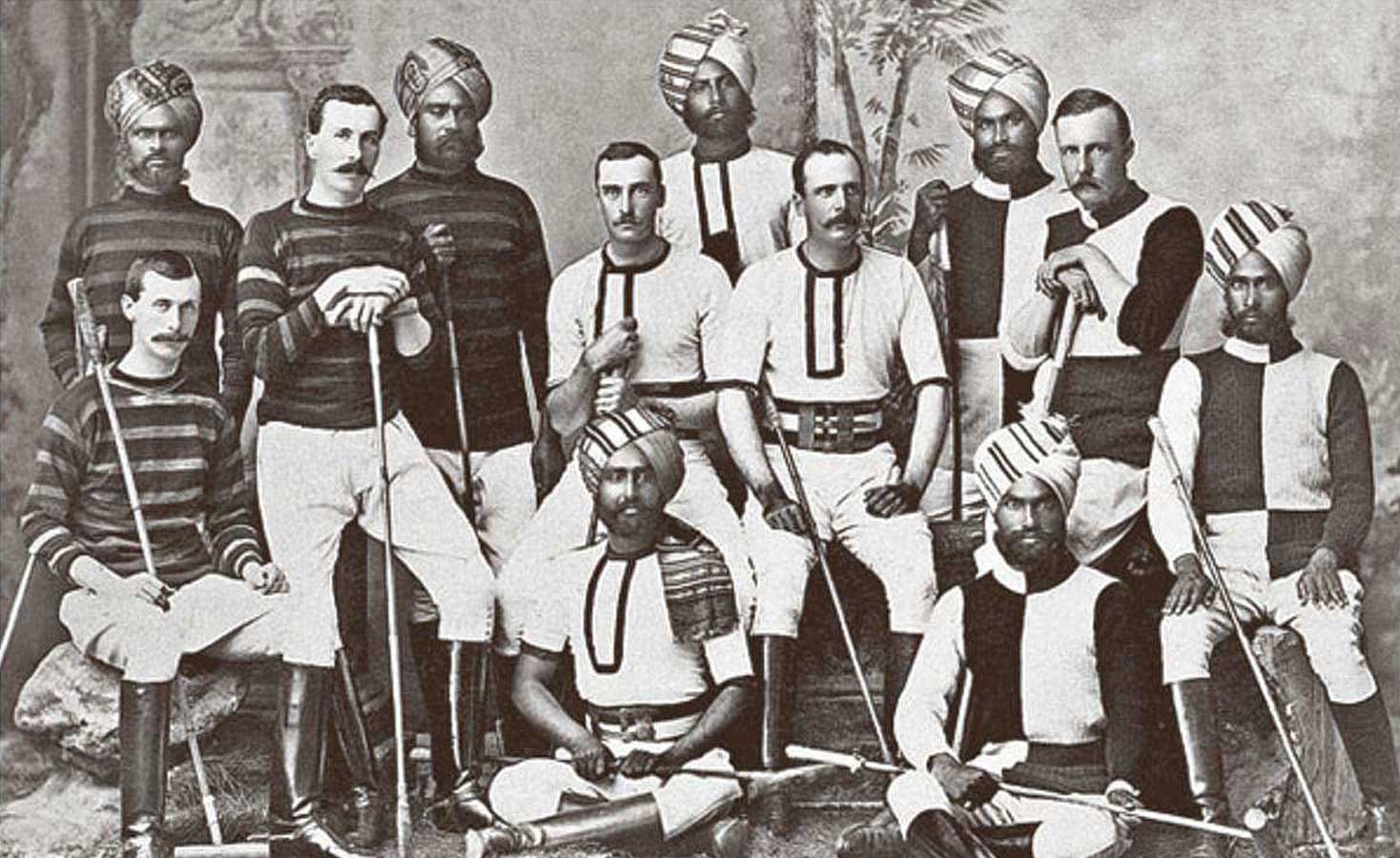
Born in darkness, fortuitously spotted by civilization, Polo became a World Sport by proxy. Even though this majestic game had always been an integral part of the Manipuri ideology, it was the Britishers who gave the game a place under the sun. The dawn of the eighteenth century saw a cultural relationship between the ever-expanding British Empire and the Mongolian race of Manipur and the Surma Valley became the meeting ground of the two cultures. The devastating war with the Burmese forced the Manipuri Princess, Chourjit, Marjit, Nar Singh and Gambhir Singh to settle at Cachar. In the lush green plains of Cachar, the frontier territory of the colonel British India, the Britishers saw the Manipuri Princess practising the battle exercises on horseback with swinging dart of Arambais or at other times playing a strange game of hockey on horseback, swinging a mallet with equal verve. Strange was the habit of the Manipuris who never left their little ponies either in war or peace. The Britishers, seeing an intimidating ally in the Manipuris, signed the treaty of alliance with Gambhir Singh and formed the famous Manipur Levy.
Polo Brings You Closer To Nature

Emilio Urrea Kirby loves Polo, the horses and his passion for the sport, but above it all, he is one of those who loves polo as a means where he can find himself closer to nature. “I think Polo does not embrace a luxurious lifestyle. It embraces a lifestyle of loving and being with horses and being healthy. You come into contact with people who appreciate you. But on a daily basis, you need to be with your horses. I feel there is misinterpretation when it comes to this. Polo is all about taking care of the horses and that’s how you will reach the heights in the game.”
Royalty & Polo
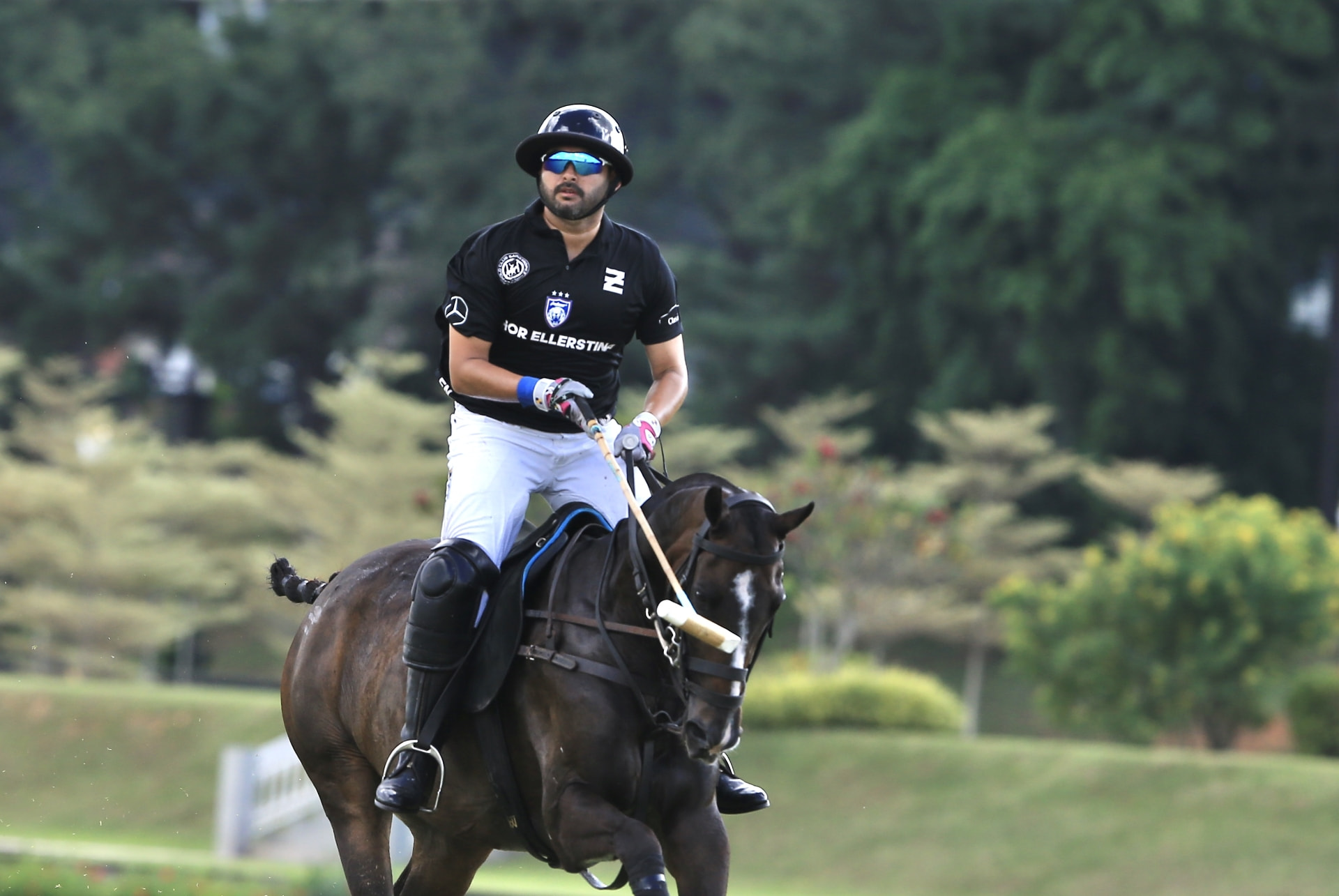
As early as the age of 9, HRH Maj Gen Tunku Ismail ibni Sultan Ibrahim had his heart throbbing for the horses and the glorious sport of Polo, which runs in his family, more as a tradition now than as a hobby. Right from the Crown Prince of Johor’s great-great-grandfather, to himself, Polo has deep roots in his family. What inspired the Crown Prince of Johor to take to the sport? He says: “One of my greatest inspirations behind joining the sport is my father, the Sultan of Johor. I've always watched him play and love the way he plays. He was one of my idols
The Polo Ponies
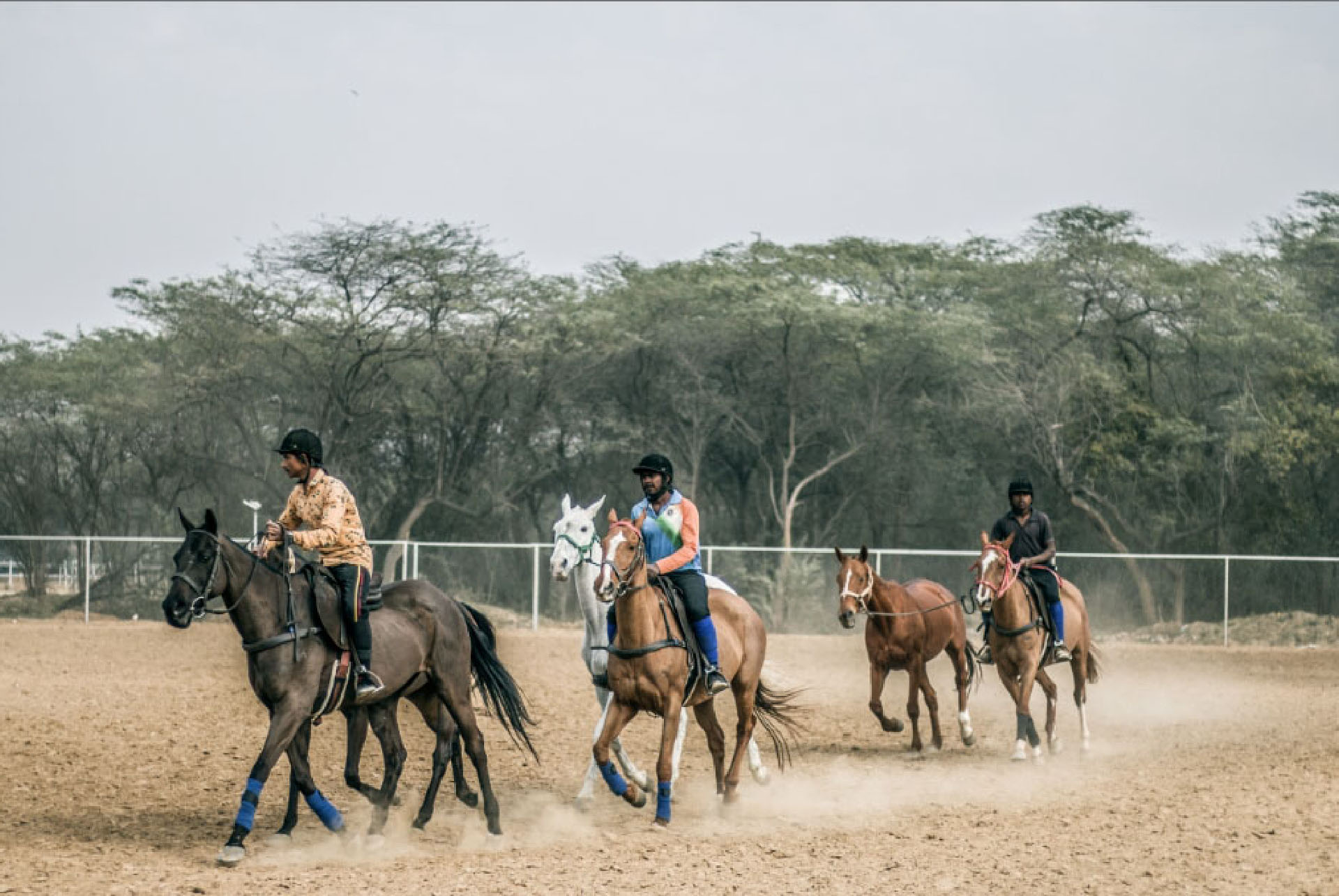
It is very usual to hear polo players talk about their favourite polo ponies. While their choices are sure to differ, one thing is constant and that is these players remarking at the “big hearts” of their ponies. Polo is known for the speed, the thrill, the action and the moves-- that if skipped--are skipped forever. It is usual to see players colliding into each other, pushing in wake to grab the control of the ball. It is a constant horse race, where the ponies don't have the time and moment to shy away to seize the bright white ball. It is for all of this, that the polo ponies are trained. Rome wasn't built in a day, and neither can a polo pony be trained fast. The journey from an infant pony to the brave beauty on the field is a long process. It needs to be trained, the game demands skill. Polo ponies are trained to be brave enough to follow the ball and let that bamboo polo mallet swing near their heads. They need to be quick and agile in order to take sudden sharp turns and follow the path of the ball through various movements. It is important for them to stay in good shape, physically as well as mentally.
Voicing Polo

Polo undoubtedly is a sport filled with thrill and speed, but what brings the flavour to it, is the unmatched enthusiasm of the commentary. Jan Marie Kiesel, known as Nigeria’s only woman polo player. She walked the path of glory all her life achieving the best she could and contributing to Polo.
The Polo Groom
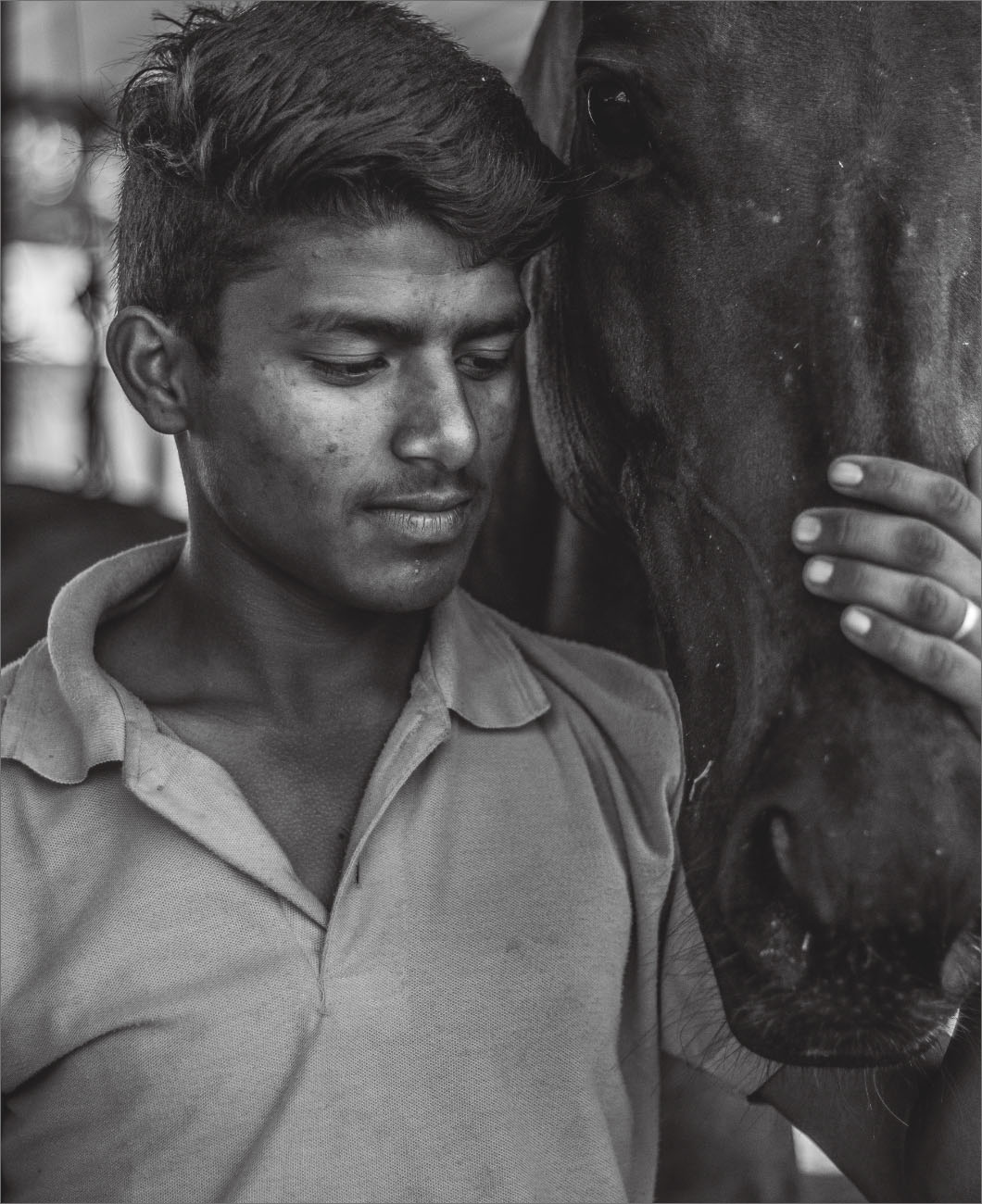
We have witnessed the power and performance of Polo on lush green fields, but what makes Polo what it is, is a story worth telling. Polo is an endless fable of heroes and some of them, we don't usually see mounted on the top of a glorious pony. They have dedicated their lives and time to the animal who makes 80 percent of the game. These experts are the polo grooms. From 5 am to the rest of the running clock, polo grooms stay up with the ponies in their best and their worst--talking, caring, loving and playing with the horses. How effortlessly do they give all of themselves to the four legged animal is a tale of unconditional love.
Age Can’t Stop You
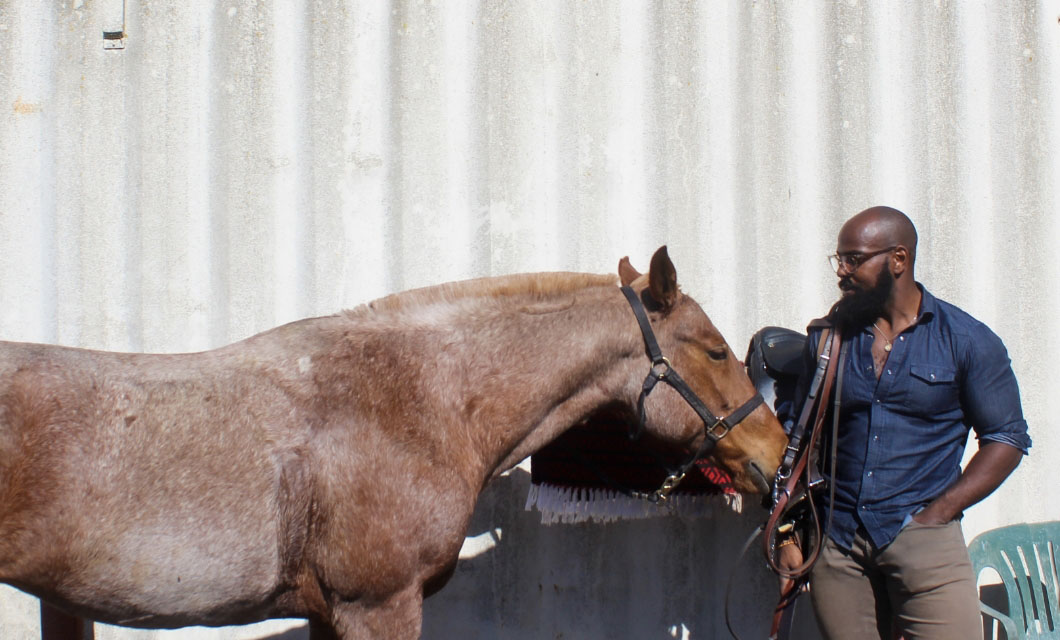
POLO isn’t always the natural choice for most people, but it takes a distinctive spark to be one in a million! Dale Johnson, at the age of 32, discovered his love for the sport. He set himself into a challenge of “100 hours on the field” and since then, there has been no looking back. He has exceeded his own challenge, and is flying high with spirited colours, making his way as the king on glorious ponies.
The Great Turfs
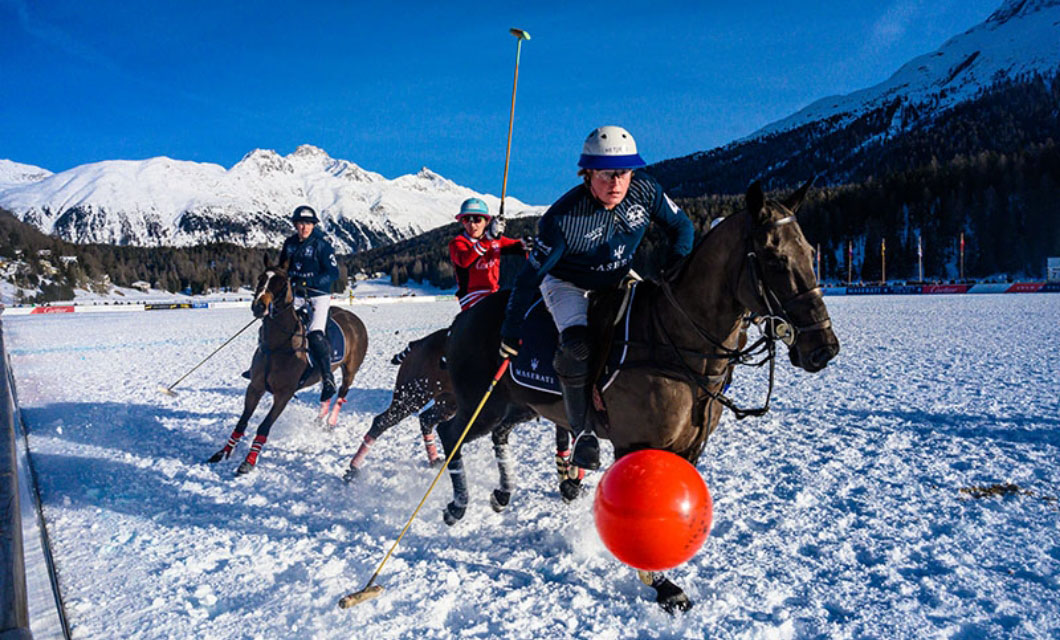
The grandeur of polo is matched by a grand field that is 10-15 acres, six times larger than an average soccer field. Not every field is suitable for a polo match – it requires good drainage, and excellent turf. Sometimes the grass is a mixture of more than one variety and grown from seeds. A good field ensures a good performance of the horses and the least injury to them. An interesting polo tradition is ‘divot stamping’ which allows the spectators to stretch their legs during half time while socializing, but more importantly it repairs the field. Over time, the game’s venue evolved, so that now there are beach polo, paddock polo, indoor polo, arena polo and the picturesque snow polo. Today a polo field is exclusive to the sport, but a couple of centuries back, the polo grounds were open to other sports. Some of the most sought-after polo clubs in the world are Santa Maria Polo Club in the Costa del Sol in Spain and Chantilly Polo Club in France.
The Tale of the Polo Balls
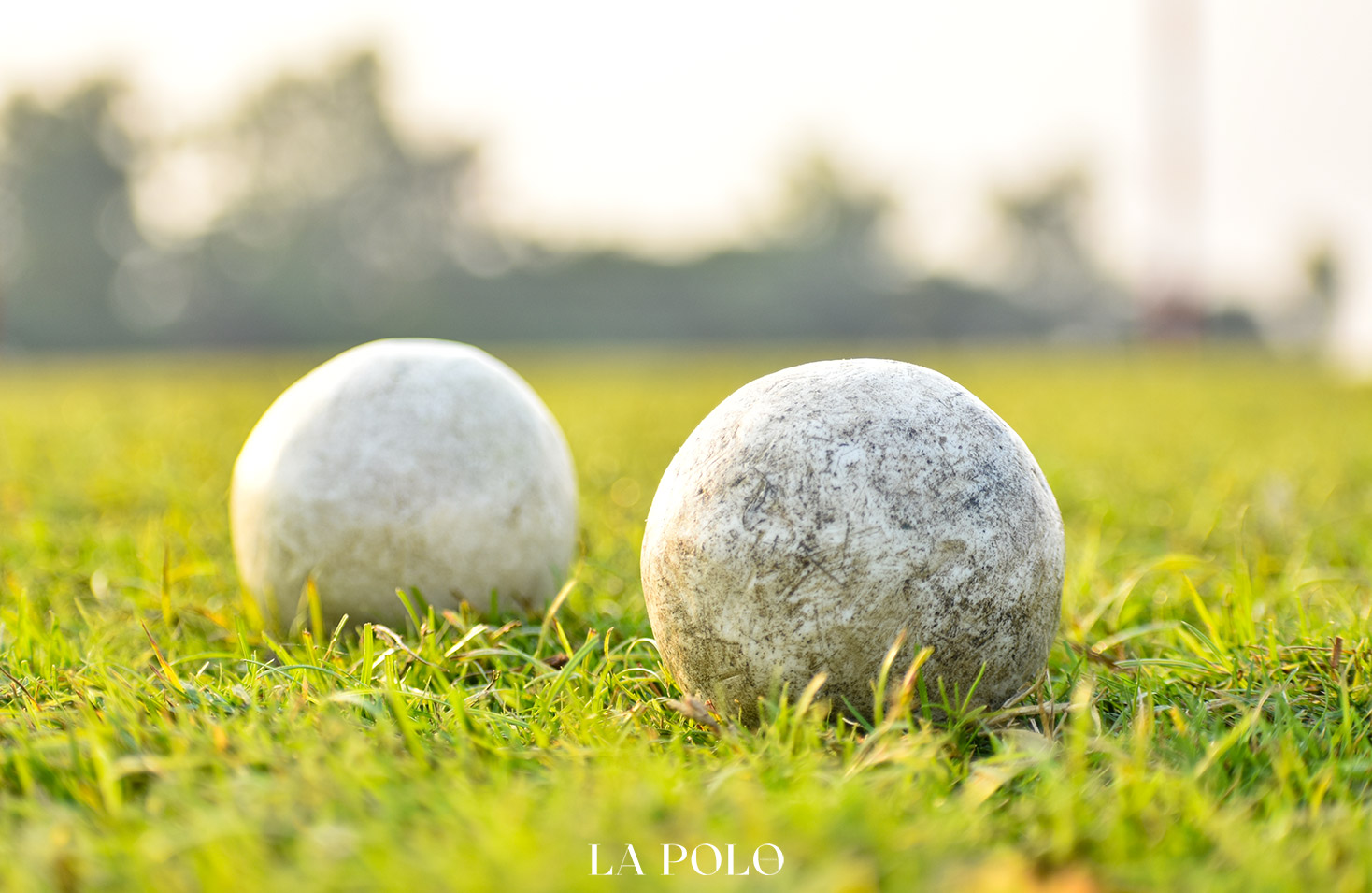
Subhas Chandra Baug is the only man alive who possesses the skill to shape a polo ball out of bamboo. “The bamboo ball is stopped from manufacturing because wooden is in demand. Bamboo balls were used on a large scale earlier because we had a lot of bamboo trees in the village. We used the roots to make the ball with our hands. The ball was in great demand but the quality kept falling. As there were a lot of orders, some companies in Kolkata took the order but started to use bad quality for making the ball. Slowly, the trend moved to plastic balls.” Baug says that the plastic ball won't have a long haul in the sport. He points out the disadvantages. “Plastic balls have a lot of speed, which is difficult for the horse because he has to run faster. I feel we will come back to the wooden balls.”
The Polo Helmet
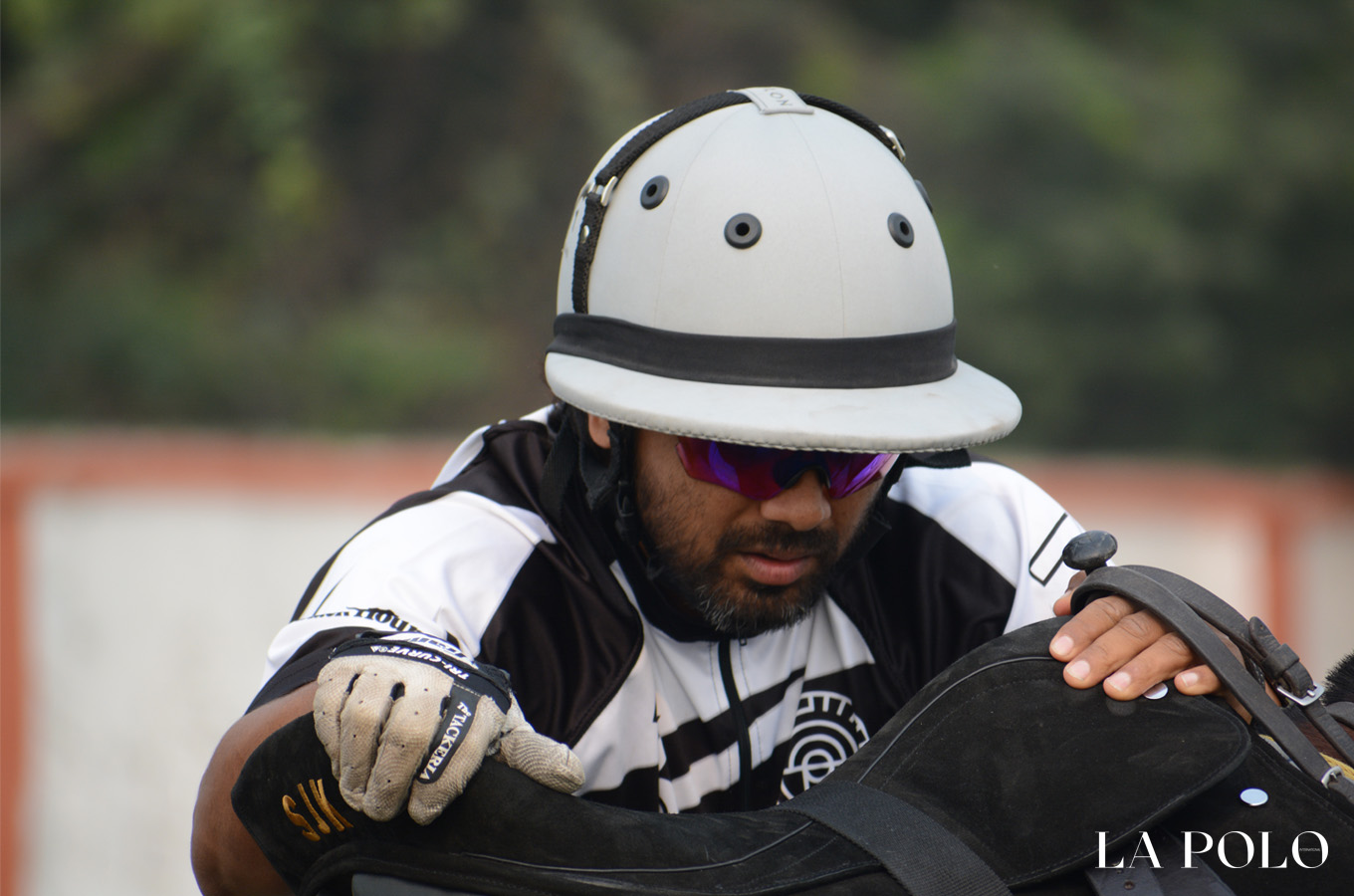
Accidents are a part of life, a part of sport and a part of everything you do. Polo is a high risk unprecedented play always prone to accidents both minor and severe. Polo helmets were introduced way back and have been evolving in its safety insurance and protection with advancement in technology and a better understanding of the game and its consequences.

The Unbeatables
In 1933, the Jaipur polo team carved a unique and an unbeaten record till date, by winning all the open tournaments in the United Kingdom and the Indian Championships successively, from 1930 to 1938. However, disturbances caused by the Second World War gave a crippling setback to the sport in the 1940s. Hence, in the Indian context, the whole burden of reviving Polo and maintaining the grounds fell on the IPA. After discussions, it was decided that in order to revive the equestrian sport in the country, the country has to invite several foreign teams of Polo, which would play exhibition matches at different locations across the country. In 1950, the Argentine Polo team was invited by India to take part in its tournaments in Jaipur, Delhi and Bombay. In 1955, the Pakistan Army Polo team was invited in a similar series of events. Both these visits carry utmost importance towards Indian Polo. Finally, Jaipur, Delhi, Calcutta and Bombay started initiating tournaments in the country at a faster pace. Calcutta took the lead as Polo was a popular game among the sports-loving people of Bengal. In 1957, an official Indian polo team was sent to take part in the World Championship in France, that included Major Kishan Singh, Kr Bijay Singh, Rao Raja Hanut Singh and HH Maharaja of Jaipur. India made a huge impact during the championship, beating all other international polo teams.
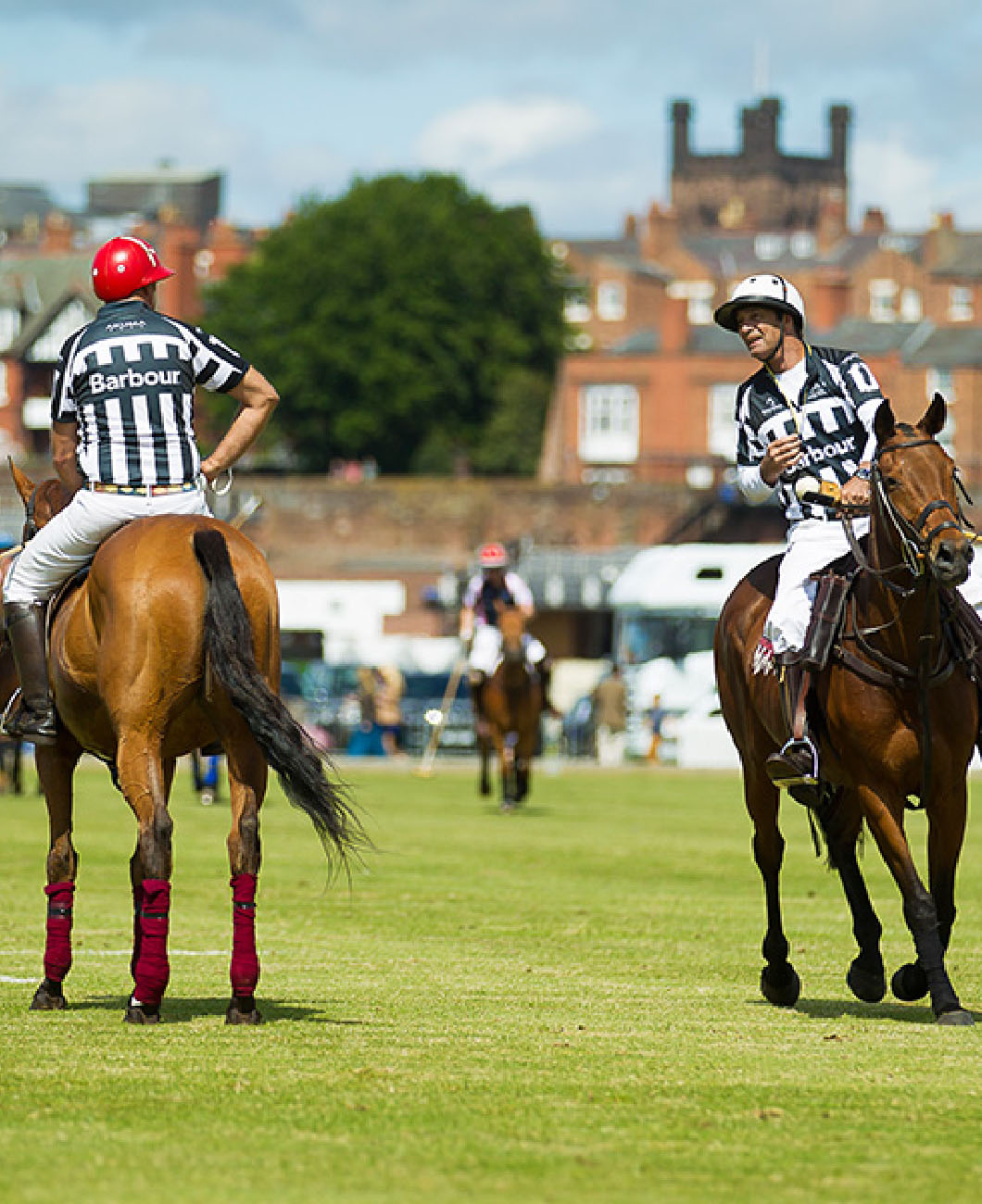
Fair Play
The umpire is a modern institution, he is the final decision maker, the game in-charge of any sport. Every polo player depends on his playing abilities, his devotion towards the horses and his attack on the field. The umpire keeps the game safe, competitive, real and fair. The umpire does not judge on the basis of the player or the team. The decision is purely in favour or against the ball. Polo has faced a certain indecisiveness in umpiring since its origin.
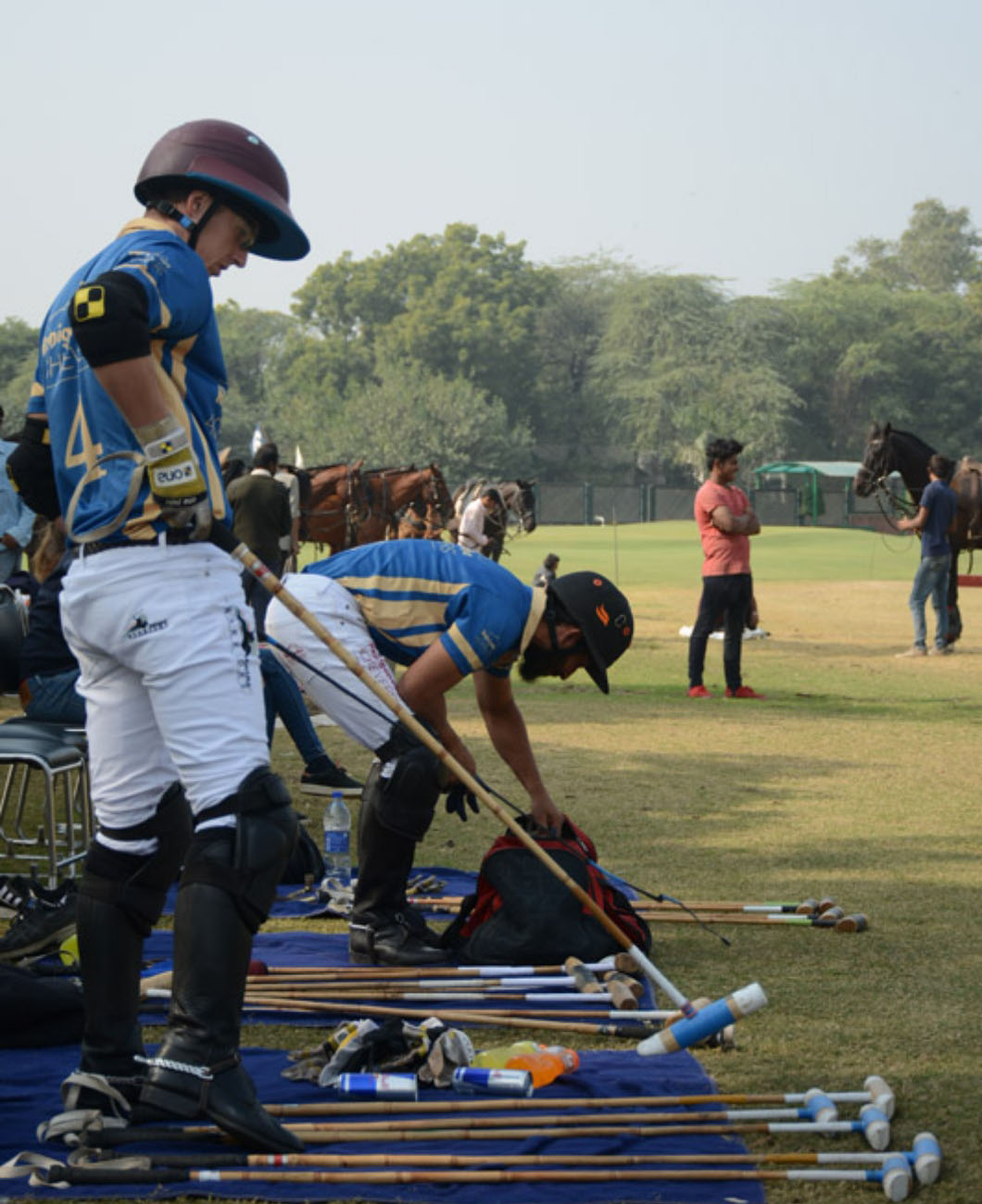
Why Breaks Are Important?
A few moments of rest after rigorous toil helps us rejuvenate, to make yet another go for greater success. Polo is not just a game, it’s a way of life. Polo players and enthusiasts can often be found citing things learnt at the game as lessons essential for life. It is imperative that intervals and resting periods make for a significant aspect of the game. Not only do these intervals provide rest to players and horses but also bring together the entire community of enthusiasts and polo lovers witnessing a match.
Walt Disney & Polo
Walt Disney’s love for animals, horses, in particular, became one of the most important reasons for him joining a local riding club where he tried horseback riding and succeeded with pleasure. It was a perfect solution for Walt as at the time in the 1930s, polo was an extremely popular sport, especially among the Hollywood elite and Walt always wanted to be a part of them. Considered to be one of the oldest team sports in history, Polo had a deep impact on Walt Disney’s life at the studio and home. By the ’30s, there were more than 25 polo fields in the Los Angeles area. Some of the fields Walt played on were the Riviera Polo Field and the Uplifters Polo Field. The iconic Beverly Hills Polo Lounge was used as a magnet for the Hollywood crowd of the time to hold court.
Polo Legacy of Lord Mountbatten
Lord Mountbatten is best recognised as a remarkable Naval official, war legend and ambassador; he was also an adept polo player. In 1923, he took a month’s course in military equitation with the Life Guards. "Polo is a wonderful sport and combines several skills: one must be a good rider and there is the challenge of striking the ball at speed. But the best thing about it is playing with friends. I was never a natural polo talent, nor a good rider at the beginning, I had to work hard to be good. I had to study the game,” Lord Mountbatten has been quoted in 1968.
Rudyard Kipling’s Polo Connection
Penned by Rudyard Kipling, The Maltese Cat is about a polo pony living among the British in India and how he achieves glory and honor in the big game against the Archangels. “Ever since he had drifted into India on a troopship, taken, with an old rifle, as part payment for a racing debt, the Maltese Cat had played and preached polo to the Skidars’ team on the Skidars’ stony polo-ground. Now a polo-pony is like a poet. If he is born with a love for the game he can be made. The Maltese Cat knew that bamboos grew solely in order that polo-balls might be turned from their roots, that grain was given to ponies to keep them in hard condition, and that ponies were shod to prevent them slipping on a turn. But, besides all these things, he knew every trick and device of the finest game of the world, and for two seasons he had been teaching the others all he knew or guessed.”
The Hyderabadi Dream
Siraj Attari, celebrated Polo player, takes us to the lush green Polo fields of Hyderabad which are now on the verge of losing their glory, thanks to red-tapism and negligence. Among his contributions has been the revival of Polo through sponsorships, an alien idea at one time. He recalls how his privilege of being associated with the Police Commissioner of Hyderabad made him familiar with horses. Riding horses at as early as five years, and then shifting to Hyderabad Public School which provided the comforts of horse riding led to his admission into the Hyderabad Riding Club. The rich history of Polo is intermingled with Hyderabadi culture. One of the oldest Polo centres lies in the city of Nizams where the first match was played circa 1875. There wasn’t a day when these grounds weren’t lit with the excitement of polo matches. Unfortunately, open grounds as those fell prey to government acquisition and construction of colonies, which is why Polo in Hyderabad suffered a setback during the 1950s to 1975.
The Indian Story
In the year 1860, two British soldiers Lieutenant Joe Sherer and Captain Robert Stewart had a pleasant sojourn in Manipur (North-Eastern State of India). During the stay, they witnessed some locals playing a game on horseback, chasing and hitting a ball with a stick. On the other hand, being professional horsemen themselves, the soldiers got fascinated with the play. Subsequently, after arriving back to Kolkata from Manipur with the reminiscent of the game, perhaps, being their base camp at that time, Lt. Sherer and Capt. Stuart put forth an idea of making it a proper sport. Finally, goal posts were planted, 4 team members per team were decided, and the Calcutta polo Club was established in 1860 at the dispersion of the two soldiers. Likewise, after the advent of the Englishmen in India, the game of polo was organized and later, made popular in the country. The fulcrum of polo in India was established in 1892 as the Indian Polo Association (IPA). There were some famous polo teams at that time, such as the team of Alwar, Bhopal, Bikaner, Jaipur, Hyderabad, and many others as well. But, the best among them were the Central India Horse, Prince Albert Victor's Own Cavalry, and the 10th Royal Hussars.
Modern Polo
Admittedly, Manipur is the key to modern-day polo because the origins of polo in Manipur provides a mythological aspect of the game. It is saturated with the culture and folklore of Manipur in such a way that rich sequences in festivals are devoted to the game of polo. Also, it is embedded in its literature which originates from that period with several mythological books of the state such as ‘Thangmeirol‘ and ‘Kangjeirol’, making references to the game. Ancient folk games, precursors of many contemporary sports, were characterized by several different factors, regardless of whether the mode was equestrian or pedestrian. There was wide variation regarding the number of participants, the ground’s size and shape, the amusements time span, and its regulations. Folk games were a deeply ingrained custom in most communities. A form of lacrosse among Native Americans, knappan in Pembrokeshire, Shrovetide football in Ashbourne, hurling in southwest England and Ireland, golfing precursors such as pall-mall and kolf in Europe, mounted games in Asia and, more recently, the game of polo in South America had a large following, either as spectators or participants. It was usual for most of a village’s inhabitants to show up for the game. According to official records, polo , in all its modernity, was being played in the state during the 19th century, but folk tales give an entirely different story to share. Allegedly, Manipur has polo not just among the mortals, but also has Marjing, who is considered the God of polo and has a pony as his carrier as well. Moreover, the Lai-Haraoba festival of the state depicts the life and times of Khori-phaba, the polo playing god of sports. Ergo, these facts indicate that the game has roots in the state from the ancient times and the royal families of Manipuri played a vital part in popularizing the game. Taking every fact into account, Manipur brought noticeable change to the game and definitely, it is a sports paradise.
Punjab Legacy
Referred to as the conquer of the sports world over, Polo is also known to be the game of the blue blooded, the rulers, the nobles and the aristocrats since ancient era. At present, it is associated more with social status and class. The Maharaja Ranjit Singh Polo Federation aims toward the elevation of equestrian sports in the state. Significantly, Punjab has witnessed the origin of leading the beast The venture has made Punjab witness the inception of an era of equestrian beasts while winning the hearts of spectators. Also, the state conquered a mammoth territory more than the size of around 3 football grounds. On the other hand, the Maharaja Ranjit Singh Polo Premier Challenge (MRSMPC) in Punjab, has given back the royal legacy, strong strength, class and tradition to the land of kings. The maiden Polo League of the state aims at satiating the hunger for equestrian rage and the craving for luxury of the elite audience.
Polo, Wine & Fashion
She has been a pastry chef, bakery owner, a wine enthusiast, a broadcast journalist, a polo player, and has done modelling gigs on the side. Rebekah Greenhill wears many hats—and all with great aplomb. She’s a game-changer in the world of women’s polo, and all this might be a heavy workload for anyone else, but she considers these as hobbies and is able to creatively satisfy all her interests and commitments with elan. Rebekah’s life took a 360-degree turn at Greenhills Winery and Vineyards, for an interview. Dazzled by her knowledge of wines, food, business and journalism, she was hired to do the marketing for Greenhills Winery and Vineyards.Though that’s not where the fairy tale began.
A Man Of Honour
When asked about his role in the Indian Polo Association (IPA), the commandant of the 61st Cavalry Regiment, Col Ravi Rathore, says: “It has been the greatest honour to have commanded one of the best regiments in the world and to have the unique privilege to be the honorary secretary to the IPA.” The Indian army’s highest handicapped polo player, a +5 handicap, Col Ravi Rathore is also an Arjuna awardee. Col Rathore mentions how winning the gold medal at Zone E in Teheran, after defeating Pakistan in 2017 and qualifying for the World Cup and being awarded two Arjuna Awards are among his and IPA’s two of the biggest achievements in the last three years.
Spiritual Ride of Polo
With health all over the world facing its toughest challenge-ever, it is time that we look at our everyday routines in a different way. Nick Sheering, a +2 handicap polo player from South Africa, takes us on a spiritual tour. Sherring has travelled to around 15 countries, playing Polo and coaching players. Across these countries, he has worked with horses, taught people about horsemanship, and Yoga. In Yoga, he found a spiritual edge to the sport. He explained how spirituality has helped him find inner peace, and connect better with horsemanship and polo. He said: “The more you put together with the creator, He is there with you in your reality.”
The Polo Rules
Who better than a professional Polo umpire can guide the way to the perfection of the sport, not just as a pro but also as an insider too, like literary! Straight from the land of Argentina, Alejandro Pascal came to India for the first time during the 2020 Delhi Spring Polo Season. During his visit, LA POLO sat in conversation with him to decode and frame the basics of Polo from the eye of an Umpire. In the course of the conversation he went on explaining the Precedence and Fouls of the game.
The Snow Polo Dream
“Snow Polo has become a part of the culture of St Moritz”, remarks Reto Gaudenzi. RETO GAUDENZI founded the Snow Polo World Cup on the frozen lake of St Moritz in 1985. It was the first-ever Polo game on snow. The godfather of Snow Polo talks to LA POLO about his initial dream, it's fulfilment and to the heights that it has reached today.
The First Lady
The 36th Snow Polo World Cup, St Moritz, was all set to take off. LA POLO at this got into a freewheeling conversation with the star player of last year’s Snow Polo World Cup, the first lady ever to win the Cup: Melissa Ganzi. Her achievement inspires millions of women around the globe.
An All Rounder
American actor, Tommy Lee Jones, has had a phenomenal career till date. He is not just an actor of extravagant skill, but in fact is an all-rounder who comes with all possible skills of a perfectionist. Jones has been an actor, director, scriptwriter, democrat, farmer, charity ambassador and as if all of this was not enough, he inherited a keen interest in the sport of Polo.
The Legendary Life of a Polo Player
At the age of 80, Philip L.B. Iglehart, a polo player from the land of Chile, took his last breath in 1993 after suffering from a congestive heart failure. Maintaining a seven-goal even after a long break from the sport, Iglehart is known for more than just polo. He was one man who helped in the commencement of Gulfstream Polo Club into what it is today. Also he collected the polo memorabilia as well as the required information to substantiate the formation of the collection of the Polo Museum and Hall of Fame.
Top Ranking
One of the only two non-Argentines in the top 10 rankings by World Polo Tour (WPT), David Sterling was born in the city of Young in Uruguay on 04 January, 1981. The 37 year-old has a 10-goal handicap ranking. Pelon, as he is fondly known, rose to fame when in 2007, he joined Adolfo Cambiaso’s Crab Orchard team to win the US Open and USPA Gold Cup. What especially caught everyone’s eyes was his ability to dribble, create spaces and produce thunderous runs down the ground. It was the embarkation of a wonderful journey that Pelon would go on to have. Since then, the Uruguayan has won two more USPA Gold Cup titles (2012, 2013), taking his tally to 3. He joined Argentine Polo team La Dolfina in 2010, and won four consecutive Argentine Triple Crown (Argentine Open, Hurlingham Open, Tortugas Open) titles from 2013 to 2016. Having won the Argentine and Tortugas Open last year, David and his team missed out on their 5th consecutive title due to the loss suffered in the Hurlingham Open. This however doesn’t snatch away his title of the reigning champion of Argentine Open, the most prestigious polo championship in the world.
No Rest Until The Best
Currently, 2nd in the World Polo Tour rankings, Facundo is the second son of polo legend Gonzalo Pieres Sn. His brothers Gonzalo Pieres Jr. and Nicolas Pieres are also amongst the best polo players on the planet. With his brilliant stickwork and horsemanship, which is always a joy to watch, he has been on the winning front in plenty of competitions. He began his career in 1997 by winning the Copa Potrillos with the Ellerstina Jr. team, which has been nothing short of marvellous. The 32 year-old has laid his hands on some of the most prestigious silverwares, not once but on several occasions. His trophy cabinet boasts of 7 Tortugas Open, 5 Hurlingham Open, 3 Argentine Open, 4 U.S Open, 5 British Open, 3 Sotogrande Gold Cup, 5 CV Whitney Cup and 5 Queens Cup. He won the Argentine Triple cup in 2010, winning all the three tournaments- Argentine Open, Hurlingham Open, Tortugas Open. He is the 2018 champion of Cartier Queen’s Cup with team La Indiana and one tournament (US Open) away from the US Triple Crown- having won the USPA Gold Cup and CV Whitney Cup with Valiente earlier this year.

